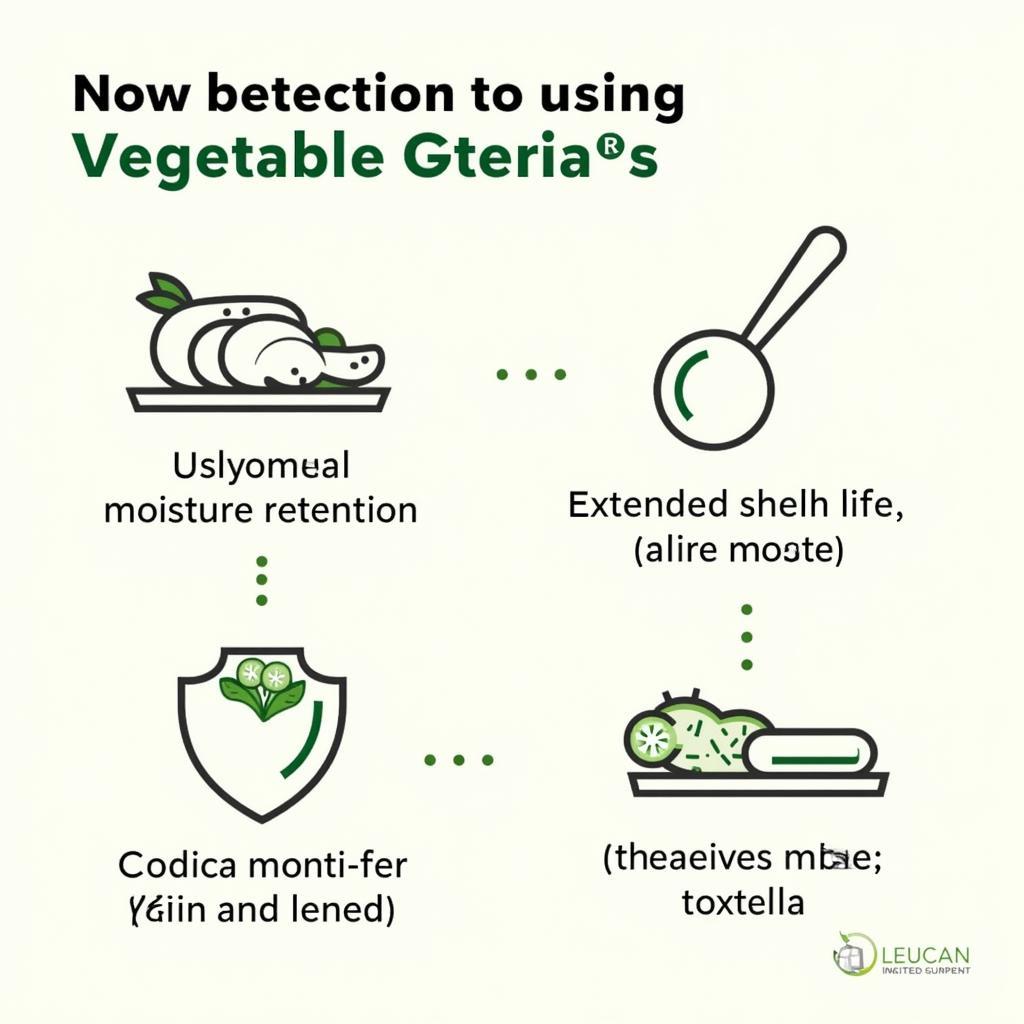Vegetable Glycerin Food Grade is a versatile ingredient finding its way into numerous food and beverage applications. From enhancing sweetness to improving texture and extending shelf life, its benefits are numerous. This exploration delves into the world of food-grade vegetable glycerin, unraveling its properties, applications, and answering common questions surrounding its use.
What is Vegetable Glycerin Food Grade?
Vegetable glycerin, also known as glycerol, is a clear, odorless, viscous liquid derived from plant-based oils, typically palm, soy, or coconut. The “food grade” designation signifies its purity and suitability for consumption, differentiating it from other grades used in industrial applications. This sweet-tasting, syrupy substance is a natural byproduct of the soap-making process and is also produced through the hydrolysis of fats and oils. It’s valued for its humectant properties, meaning it attracts and retains moisture, making it a popular ingredient in various food products. Beyond its role as a humectant, it also functions as a solvent, sweetener, and thickener.
Exploring the Applications of Vegetable Glycerin in Food
The applications of vegetable glycerin food grade in the culinary world are vast and diverse. Its humectant properties make it an ideal ingredient in baked goods, preventing them from drying out and maintaining their moisture content. In candies and confectionery, it adds sweetness and prevents crystallization. It’s also used in beverages, adding a smooth texture and enhancing sweetness. Moreover, its ability to act as a preservative helps extend the shelf life of various food products. Beyond its functional properties, its low glycemic index makes it an attractive alternative sweetener for individuals looking to manage their sugar intake.
Benefits of Using Vegetable Glycerin Food Grade
Vegetable glycerin food grade offers several advantages. It contributes to improved texture, enhanced sweetness, and extended shelf life in food products. It’s also a valuable addition to low-sugar or sugar-free recipes due to its lower glycemic index compared to traditional sugars. Moreover, its solubility in both water and alcohol expands its versatility, allowing it to be incorporated into a wide range of formulations. The humectant nature of vegetable glycerin is beneficial for skin health and is often included in skincare products.
Common Questions about Vegetable Glycerin Food Grade
Is Vegetable Glycerin Safe for Consumption?
Yes, food-grade vegetable glycerin is generally recognized as safe for consumption by regulatory bodies worldwide.
What is the Difference Between Vegetable Glycerin and Other Types of Glycerin?
Vegetable glycerin is derived from plants, while other types, like animal-derived glycerin, have different sources. Ensuring “food grade” status is crucial for consumption.
How Should Vegetable Glycerin Be Stored?
Store it in a cool, dry place, away from direct sunlight, to maintain its quality and prevent degradation.
Where Can I Purchase Food-Grade Vegetable Glycerin?
Food-grade vegetable glycerin can be purchased from specialty food stores, online retailers, and some pharmacies.
Can Vegetable Glycerin Be Used in Vegan and Vegetarian Products?
Yes, as it is plant-derived, it’s suitable for both vegan and vegetarian diets.
Is Vegetable Glycerin Suitable for People with Dietary Restrictions?
Generally, yes. However, always consult with a healthcare professional or registered dietitian if you have specific dietary concerns or allergies.
 Benefits of Using Vegetable Glycerin in Food
Benefits of Using Vegetable Glycerin in Food
Conclusion
Vegetable glycerin food grade offers a plethora of benefits for food manufacturers and consumers alike. Its versatility, coupled with its humectant, sweetening, and preservative properties, makes it a valuable ingredient in a wide range of applications. By understanding its properties and applications, you can fully harness the potential of this valuable ingredient to elevate your culinary creations.
Expert Insights:
-
Dr. Amelia Carter, Food Scientist: “Vegetable glycerin’s humectant properties are invaluable in preserving the freshness and texture of baked goods, preventing them from becoming stale.”
-
Chef Michael Rossi: “The subtle sweetness and smooth texture vegetable glycerin imparts makes it a secret weapon in my dessert creations, allowing for complex flavor profiles.”
-
Nutritionist Sarah Green: “For clients looking for low-glycemic options, vegetable glycerin can be a useful tool in creating delicious and healthier treats.”
FAQ
- What are the common uses of vegetable glycerin food grade? (Baking, confectionery, beverages, and as a preservative)
- How does vegetable glycerin affect the texture of food? (It improves moisture retention and creates a smoother texture.)
- Is vegetable glycerin a natural product? (Yes, it’s derived from plant-based oils.)
- Does vegetable glycerin have any known side effects? (Generally safe, but excessive consumption may cause mild digestive discomfort.)
- Can vegetable glycerin be used as a sugar substitute? (It has a lower glycemic index than sugar, making it a suitable option in some cases.)
- How is vegetable glycerin different from regular glycerin? (Vegetable glycerin is plant-derived, ensuring suitability for vegans and vegetarians.)
- Where can I find more information about vegetable glycerin? (Check reputable sources like scientific journals and food safety organizations.)
For further assistance, please contact us at Phone Number: 02437655121, Email: minacones@gmail.com, or visit our address: 3PGH+8R9, ĐT70A, thôn Trung, Bắc Từ Liêm, Hà Nội, Việt Nam. We have a 24/7 customer service team ready to assist you.